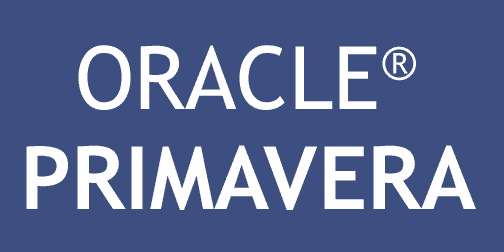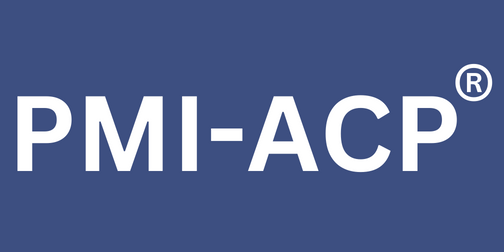
Who Can Use Scrum? Hint: It's Not Just Teams
Posted On November 18, 2024 - 14:52 PM
In the last few years, scrum has gained immense popularity as a tool for dealing with complicated problems and producing quality items and products in a fast-evolving environment. The original purpose of Scrum was to facilitate software development, Scrum has evolved beyond its original purpose and has proven beneficial for a variety of sectors and roles. This blog explores the plethora of applications for Scrum by studying the people who could benefit from its framework and why it's no longer only for traditional teams for project work.
What is Scrum? A Quick Recap
The Scrum framework is agile and allows collaborative work and continuous progress towards a common goal. The key roles are product owner, scrum master, and Development Team, and activities are scheduled in brief periods called Sprints. Scrum allows transparency, inspection, and adaptation, which allows teams to improve their procedures and strive for continuous improvement. While Scrum might be thought of as a picture of teams working on software development, it's adaptable to a variety of areas.
Why Scrum Works for More Than Just Software Teams
The flexibility of Scrum and its focus on iterative improvement makes it ideal for situations that go beyond tech teams. It focuses on delivering value through incremental steps, enabling individuals to react to changes quickly. This ability to adapt has led businesses across different industries to embrace Scrum principles and find innovative methods to implement the framework. Examining the main features that make it possible to see the reasons Scrum isn't limited to software but applies to many different roles and industries.
1. Product Development Teams
Product development encompasses more than just software. it encompasses any digital or physical product including medical devices, to educational materials. Teams often have to deal with changing needs and scrum allows them to adapt to changes without destroying the whole project. With Scrum products, teams of product managers can:
-
Incorporate feedback quickly: Scrum's iterative cycles enable teams to adjust to changing information, feedback from customers or even regulatory changes.
-
Streamline collaboration: Scrum encourages collaboration across functional lines, which ensures that designers, developers, and other stakeholders can work effectively.
Example: A team developing medical equipment could employ Scrum to quickly iterate over prototypes, providing feedback to health experts regularly.
2. Marketing and Content Teams
Scrum provides a systematic approach to managing the creative process. It allows teams in content and marketing to collaborate more effectively and produce more efficient results. Through the use of Scrum, the teams can:
-
React to market trends: Scrum's adaptability allows marketing teams to react to changing trends, competition and marketing campaigns.
-
Enhance Campaign Efficiency: Scrum's focus on improving through iterative processes means that campaigns are better positioned to connect with their intended audience efficiently.
An example: A team of content creating a series of articles and a social media marketing campaign can plan their work in Sprints that allow for periodic review of feedback from the audience and campaign analytics to improve their strategy.
3. Sales Teams
Although scrum master might appear to be an odd choice for sales, a lot of companies have realized its advantages for managing leads, contacting clients as well as closing sales. Sales teams can benefit from Scrum to:
-
Effectively manage leads: The iterative nature of Scrum aids sales teams in prioritizing leads, altering sales pitches, and reacting to feedback.
-
Encourage Collaboration: Scrum promotes the collaboration of other teams, such as product and marketing, which creates the same strategy.
An example: A sales team might make use of Scrum to plan lead generation tasks, monitor the progress of accounts that are high-priority and collaborate with marketing for targeted campaigns.
4. Human Resources (HR)
Human Resources departments have to deal with evolving needs that require agile thinking. From recruiting to employee onboarding and policy creation, Scrum gives HR the tools needed to meet the demands of the organization. Scrum assists HR teams in:
-
Streamline Recruitment: HR may use Scrum to control the recruitment process, enhancing communication with both hiring managers.
-
Enhance Onboarding: By breaking down onboarding into phases (or Sprints) HR can increase engagement and retention of employees.
For instance, HR departments can organize their hiring process into Sprints to ensure constant feedback from applicants and enhance the process for future applicants.
5. Operations and Manufacturing
Operations teams, particularly in the manufacturing industry, could profit from the systematic method Scrum can bring to managing projects. Although traditionally, it is a lean work manufacturing environment, the manufacturing industry has successfully adopted Scrum to:
-
Optimize Production Processes: Scrum is a great tool for simplifying complex workflows as well as improving the efficiency of departments.
-
Keep Quality Control: Scrum's frequent check-ins enable teams to address quick quality issues and minimize the risk of problems.
An example: A manufacturing company might make use of Scrum to manage a production line, taking on challenges such as disruptions to supply chains in the form of iterative cycles and adapting when needed.
6. Event Planning and Management
The event planning teams have numerous moving parts, from venue selection to the management of vendors. Scrum helps these teams remain on track and adjust to any last-minute adjustments. Through Scrum events teams can:
-
Coordinate Tasks Effectively: Scrum assists event managers in prioritizing tasks that have a high impact and collaborate cross-functionally.
-
Adapt to changes: Unforeseen changes are frequent in the course of events and Scrum allows you to tackle issues swiftly.
Example: A planning scrum team could use Sprints to manage the events and make sure everything from the catering schedule to speaker scheduling remains on schedule.
7. Education and Training
Professionals in education, such as trainers and curriculum designers appreciate Scrum's iterative process which lets them evaluate and modify instructional materials. Scrum aids educational teams through:
-
Enhancing the Course: Scrum allows instructional designers to experiment and refine courses before launching.
-
Enhancing Learner Engagement: Educators can implement feedback cycles and adapt teaching techniques to increase outcomes and engagement.
Example: A team of trainers designing an online course may divide content development into Sprints to allow time for feedback and changes Based on the pilot tests.
8. Research and Development (R&D)
Research teams, specifically those who work in areas such as pharmaceuticals, biotechnology, and engineering, could benefit from Scrum's structured but flexible process. Teams working in these fields face lengthy timelines and need to be constantly adjusted according to the results. Scrum can help by:
-
Supporting Iterative Experimentation: Teams can conduct experiments within Sprints by modifying the research strategy based on the outcomes of each round.
-
Facilitating Collaboration: Scrum helps facilitate knowledge exchange among engineers, researchers and other participants.
Example: A research team developing the development of a new drug might use Scrum to oversee research that is regularly evaluated and cooperates with regulatory authorities.
9. Legal Teams
Legal teams, particularly in corporate environments, have to deal with a lot of documentation compliance, regulatory, and documentation changes. Scrum assists legal teams in:
-
Control Case Workloads: Scrum helps with better management of cases, as well as managing time and resources.
-
Adjust to Legal Changes: Scrum's flexibility supports teams working in the legal field to quickly respond to changes in regulations.
An example: A legal team could employ Scrum to manage numerous contract negotiations while adjusting strategies according to the changing demands of clients and legal guidance.
10. Nonprofits and NGOs
Non-profit organizations can utilize Scrum to oversee projects ranging from community outreach to fundraising. Given the limited funds and frequently high stakes, the flexible structure permits nonprofits to:
-
Maximize Resources: Non-profits can utilize Scrum to prioritize the most effective initiatives and improve the allocation of resources.
-
Engage Stakeholders: Regular Scrum meetings allow nonprofits to keep stakeholders informed and modify initiatives according to feedback.
Example: A charity that focuses on the conservation of the environment could use Scrum to plan campaigns, measure the impact of their actions, and change priorities according to the data on environmental impacts.
Benefits of Applying Scrum Beyond Software
Making the transition from Scrum to environments that are not software-based has many advantages:
-
Improved Collaboration and Communication: The emphasis is on meeting in teams and the transparency of meetings fosters collaboration.
-
Flexible Enhancement: Scrum's iterative nature makes it simpler for teams to adjust to the latest information.
-
Enhances Efficiency and Productivity: Regular review meetings allow teams to focus on tasks that have a high impact, reducing the need for waste.
-
Better alignment with goals: Scrum's emphasis on prioritizing work can help teams remain aligned with their goals.
Tips for Applying Scrum in Non-Software Teams
-
Start small: Implement Scrum practices slowly. Make use of daily stand-ups and sprints to assess how they work with the needs of your team.
-
Change Roles based on Needs: You may need to alter Scrum role assignments (e.g. having one person who is both the Product Manager as well as Scrum Director) to match the structure of your team.
-
Concentrate on Continuous Improvement: After each Sprint review the things that went well and then consider how you can improve it. The importance of iteration is.
-
Encourage Cross : Functional Collaboration: Encourage collaboration between departments and teams to ensure alignment.
Conclusion
Although the scrum team was originally developed for software development, the framework has changed, revealing enormous potential in a variety of areas. Its flexibility emphasis on transparency and dedication to continuous improvement make it an effective tool in all fields including sales and marketing up to R&D as well as education. If you're a large business or a small non-profit, Scrum offers the flexibility to achieve the success of teams in dynamic environments, assisting teams and individuals to remain agile and collaborating, while remaining focused on creating the best value. When you adopt Scrum and non-software teams, they can produce better results as well as more effective workflows which proves that the value of Scrum goes beyond its origins.
Check Out This Blog : PMI-ACP Agile Certification Exam: Essential Tips and Resources


















